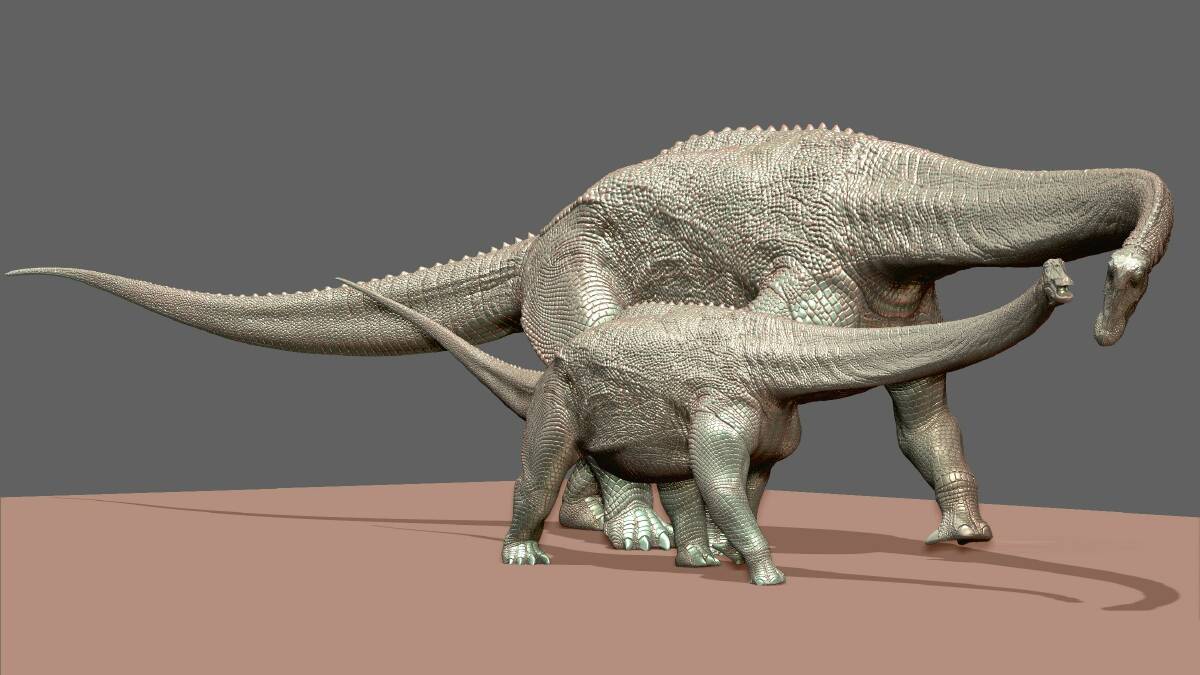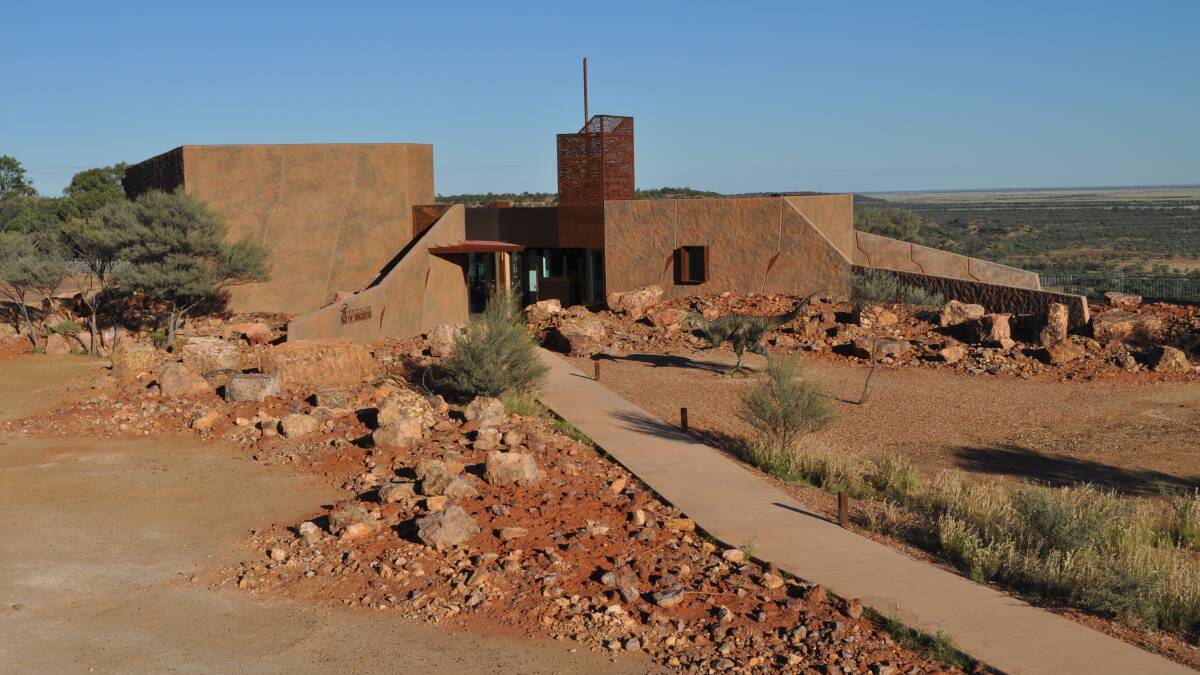
A team of palaeontologists have discovered a series of well-preserved 95-million-year-old dinosaur tracks on a property near Winton.
Subscribe now for unlimited access.
$0/
(min cost $0)
or signup to continue reading
The tracks, preserved in a rock shelf at the bottom of a small creek, extend 55 metres and cover an area the size of two basketball courts.
Footprints on the trackway include 20 tracks made by a single large sauropod dinosaur, footprints made by small ornithopod dinosaurs and chicken-sized theropod dinosaurs and the trampled tracks of other sauropods including at least one sub-adult.
Australian vertebrate palaeontologist Dr Stephen Poropat of Swinburne University of Technology in Melbourne who is leading the Australian Age of Dinosaurs Museum’s research team said the sauropod footprints were exceptionally well-preserved.
“The impression of a giant thumb claw is clearly visible on most of the fore feet and, in some, the impressions of individual toes can be identified,” Dr Poropat said.
“Each of the animal’s hind footprints is nearly one metre long.”
Dr Poropat said that having three major dinosaur groups – sauropods, ornithopods and theropods – represented on the same trackway surface was incredibly rare.
“The small ornithopod and theropod footprints were clearly made by very similar trackmakers to those preserved at Lark Quarry about 100km south of this site,” he said.
He said the longest sequence of sauropod footprints can be followed continuously for more than 40 metres and would have comprised nearly two dozen fore and hind footprint sets when complete.
“These footprints are the best of their kind in Australia and their shape can be distinguished from all known sauropod footprints worldwide,” he said.
Dr Poropat said that many of the footprints were surrounded by concentric mud cracks that were propagated through the once-moist sediment by the weight of the sauropod’s footfalls.
“That these fine details are so well preserved after 95 million years is remarkable,” he said.

Executive Chairman of the Australian Age of Dinosaurs Museum David Elliott led the excavation in April 2018 with volunteers and museum staff.
Mr Elliott said the newly exposed trackway was extremely fragile and its removal from the creek bed was a high priority for the museum.
Relocation of the trackway began in September 2018 and the Museum has now removed 25 per cent of the total area including all the fragile footprints in danger of being destroyed.
“This is a very slow and painstaking process,” Mr Elliott said.
“The total weight of the trackway is in the vicinity of 500 tonnes and we are transporting it back to the Museum, one two-tonne trailer load at a time.”
Relocation of the trackway is expected to continue through to the end of winter 2019.
A scientific analysis of the trackway has been submitted for peer review by Dr Poropat and his colleagues and Mr Elliott is hoping the attraction, named March of the Titanosaurs, will be open to the public from May 2020.
Tourism Industry Development Minister Kate Jones said the discovery was a first for Queensland and will play a significant role in boosting visitor numbers to the Queensland outback.
“These tracks will create international exposure for Winton which will have a significant impact on the outback tourism economy,” Ms Jones said.


